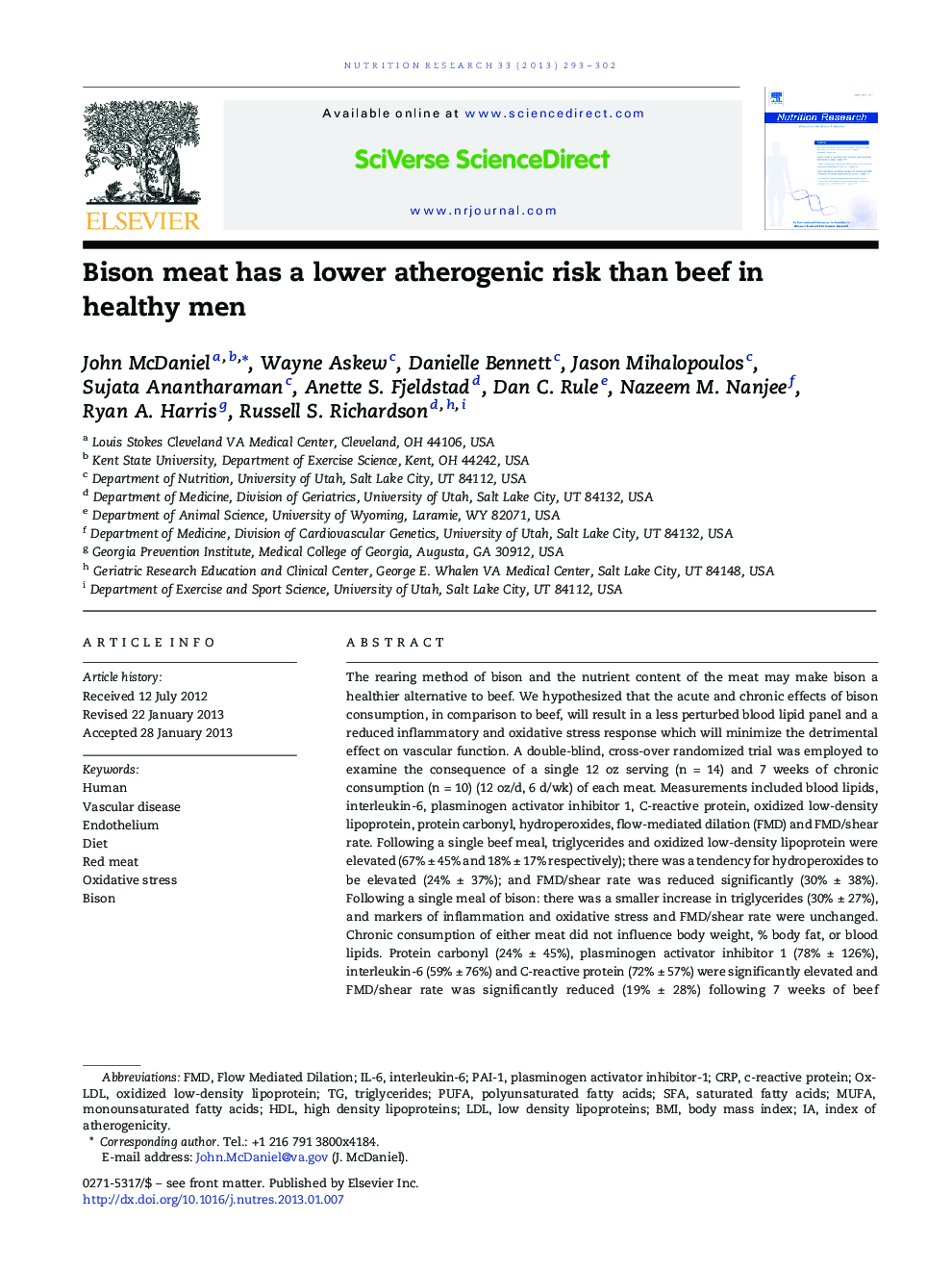| Article ID | Journal | Published Year | Pages | File Type |
|---|---|---|---|---|
| 2809120 | Nutrition Research | 2013 | 10 Pages |
The rearing method of bison and the nutrient content of the meat may make bison a healthier alternative to beef. We hypothesized that the acute and chronic effects of bison consumption, in comparison to beef, will result in a less perturbed blood lipid panel and a reduced inflammatory and oxidative stress response which will minimize the detrimental effect on vascular function. A double-blind, cross-over randomized trial was employed to examine the consequence of a single 12 oz serving (n = 14) and 7 weeks of chronic consumption (n = 10) (12 oz/d, 6 d/wk) of each meat. Measurements included blood lipids, interleukin-6, plasminogen activator inhibitor 1, C-reactive protein, oxidized low-density lipoprotein, protein carbonyl, hydroperoxides, flow-mediated dilation (FMD) and FMD/shear rate. Following a single beef meal, triglycerides and oxidized low-density lipoprotein were elevated (67% ± 45% and 18% ± 17% respectively); there was a tendency for hydroperoxides to be elevated (24% ± 37%); and FMD/shear rate was reduced significantly (30% ± 38%). Following a single meal of bison: there was a smaller increase in triglycerides (30% ± 27%), and markers of inflammation and oxidative stress and FMD/shear rate were unchanged. Chronic consumption of either meat did not influence body weight, % body fat, or blood lipids. Protein carbonyl (24% ± 45%), plasminogen activator inhibitor 1 (78% ± 126%), interleukin-6 (59% ± 76%) and C-reactive protein (72% ± 57%) were significantly elevated and FMD/shear rate was significantly reduced (19% ± 28%) following 7 weeks of beef consumption, but not bison consumption. Based on our findings, the data suggest that bison consumption results in a reduced atherogenic risk compared to beef.
